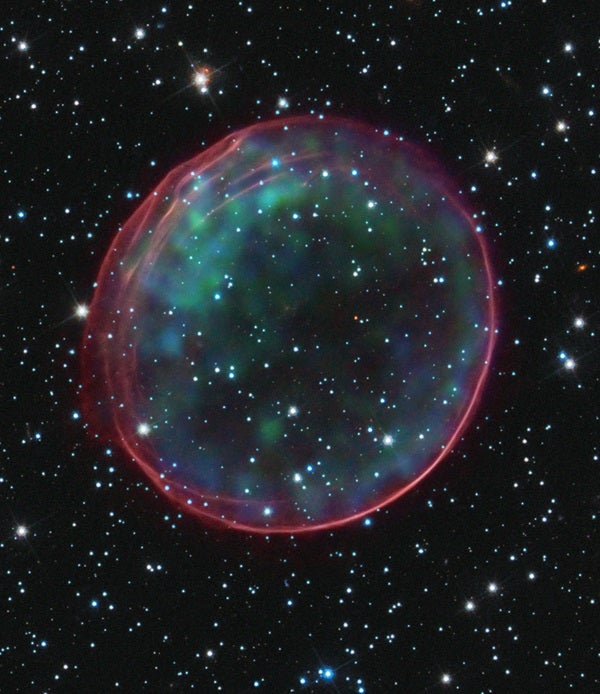In the case of two white dwarfs, the two stars spiral closer and closer, giving off gravitational radiation, until they collide. If their combined mass is greater than the Chandrasekhar limit, the collision will result in a type Ia supernova.
In the case of one white dwarf and a regular star, as the stars evolve and begin to spiral closer to each other, they reach a point where mass transfer begins. The white dwarf’s gravity is very strong, and the outer layers of the regular star are not tightly bound, so the white dwarf is able to pull gas from the regular star onto its surface. This mass transfer stabilizes the orbit so that the two stars no longer move closer to each other and will not collide, as in the case of the two white dwarfs. Instead, the white dwarf can accumulate so much mass from its companion that it reaches the Chandrasekhar mass limit and explodes as a type Ia supernova, leaving its companion star behind. If we don’t find a star near the supernova remnant’s center, we can assume the explosion came from two white dwarfs. — Ashley Pagnotta, Louisiana State University, Baton Rouge
I read recently about the possibility of two white dwarfs colliding to create a type la supernova. Why do astronomers think it has to be two white dwarfs instead of a white dwarf colliding with a regular star?
Steven Smith, Charlotte, North Carolina
Astronomers know that supernova remnant 0509-67.5 was caused by a type Ia supernova, but they can’t find a leftover companion star near its center. This implies that two white dwarfs collided and exploded as the supernova. Credit: NASA/ESA/B. Schaefer and A. Pagnotta (Louisiana State Univ., Baton Rouge)/CXC/SAO/The Hubble Heritage Team (STScI/AURA)/J. Hughes (Rutgers Univ.)
We have known for a while now that a type Ia supernova comes from a white dwarf that has exceeded the “Chandrasekhar” mass limit — nearly 1.4 times the Sun’s mass. Astronomers have two theories of how the white dwarf can get to that mass, and both say that the star must interact with a companion sun of some sort to gain material and reach this limit. This companion has one of two possible identities: It can be another white dwarf or a regular star (like a red giant). In both cases, the two stars were in a binary orbit with each other long before one (or both) became a white dwarf, and likely since they were born. (Due to the extreme vastness of space, two disconnected stars randomly colliding with each other would be an incredibly rare occurrence.)










